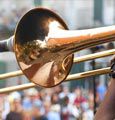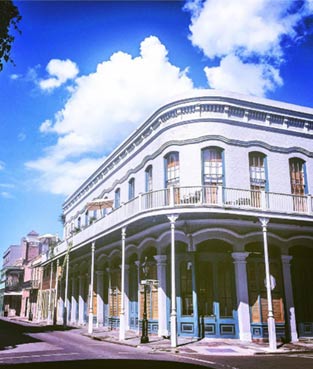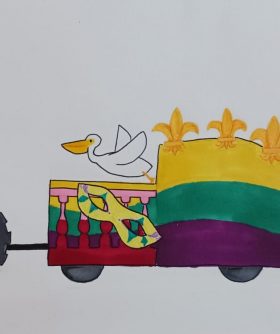We've got culcha, dawlin'!
-

Art
From the street painter making their appearance to the internationally famous abstract artists whose work hangs in the museums, New Orleans is home. You can find art from drawings to paintings to photography for sale in Jackson Square, housed in galleries across the French Quarter and Warehouse District or displayed in the many museums within the city limits. New Orleans is a city that attracts artists and brings out their creativity. It’s a city where art is appreciated and becomes a unique part of the beauty that fills the city. Read More » -

Movies
New Orleans has become Hollywood South. Hundreds of movies have been filmed here and many more are shot here every year. Many actors, actresses and producers now call the city home. Its beauty and history is as much a back drop for the films as it is an inspiration for new movies. Movies that have been shot here include classics set here like A Streetcar Named Desire to modern blockbuster hits like The Curious Case of Benjamin Button. Read More » -

Broadway
From local theater productions to Broadway shows, the fine arts are a part of the night life here. On any given day, you can see a comedy show put on by a local troupe, an opera performed by the most talented singers or a Broadway hit in town. We have all of the information about upcoming shows, access to the best tickets and details about all of the venues across town. Read More » -
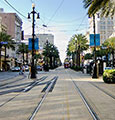
Say What?
Influenced by the French settlers, Spanish colonists and the numerous other cultures that have lived here, the region has its own sayings, lingo and language that are uniquely New Orleans. Terms you might hear include dressed (you want your po-boy with the works), making groceries (going grocery shopping), neutral ground (the median between two roads) and lagniappe (a little bit of a bonus from a merchant). Read More » -

Recipes
New Orleans food has a long history with food, influenced by the people and the cultures that have lived here since the city was founded. Like the architecture and language, there is a distinct influence from the French and Spanish colonists, as well as the Cajun and Creole Settlers. Food could be described as seafood based and spicy, but that would be truly limiting the broad scope that is New Orleans food. The food here is passed down generation by generation and spread across the country by the visitors to the city. Read More » -

New Orleans Cemeteries
Unlike the cemeteries in the rest of the country where family members that have passed away are buried six feet below the ground, the deceased in New Orleans are buried above the ground. These above ground cemeteries are called the Cities of the Dead. The story is that the deceased are buried above the ground because early settlers had trouble burying their dead because of the high water tables. It follows the Spanish custom of using vaults and gives these unique cities their distinctive look. Read More »
History
-

History
New Orleans celebrates its history; you can see its appreciation just about anywhere in the city from the famous French Quarter, which is New Orleans’ first neighborhood to Uptown where historic homes are treasured. New Orleans’ story beings with it’s founding by the French, its development by the Spanish, French and Americans; then continues to present day. Along the way it’s been shaped by a number of wars, hurricanes have tried to leave their marks, but the city continues to create a remarkable story. Read More » -

World War II Museum
The National World War II Museum in the Central Business District is a popular destination for people of all ages from elementary school groups to their elders that actually fought in the war to end all wars. The museum explores the lives of the men and women that played a role in the war. Exhibits teach visitors about the war and the war effort back home. There’s text exhibits, videos that share the voices of the soldiers and those supporting the effort back home, as well as a 4-D movie called Beyond All Boundaries that brings the war to life. Read More » -
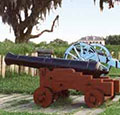
Chalmette Battlefield
The Chalmette Battlefield & National Historic Park marks the spot where the Battle Of New Orleans was fought between the British attackers and American Defenders. On January 14, 1815, Andrew Jackson led the American troops, including the pirate Jean Lafitte to victory. Unfortunately, it’s a battle that should’ve never been fought. Two weeks earlier a peace treaty was signed, but word never made it to the commanders on either side. The park tells the story of the battle with markers along the grounds. There’s also the Chalmette National Cemetery that holds the bodies of soldiers who fell during this battle, as well as the Civil War. Read More » -
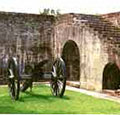
Forts Near New Orleans
There’s a number of forts near New Orleans that were designed to protect the port city, as well as the land and waterways around it. Many of the forts were built after the War of 1812 and the Battle of New Orleans, which highlighted the areas weak defenses to an attack. None of the forts saw action in that war, but several of them saw fighting during the Seminole Wars and more during the Civil War. Read More » -
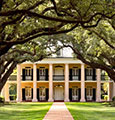
Plantations
Plantation tours today have evolved from experiences that glorify the Old South to opportunities to learn what life was really like before, during and after the Civil War for all those who lived here, including those who were so cruelly enslaved. Along with tours of these beautiful "Big Houses" and gardens, you'll get a more enlightened glimpse of life on the Great River Road. You may even hear a ghost tale or two, along the way. Read More »
-
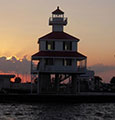
Lighthouses
New Orleans is a city surrounded by water, most famously by the Mississippi that bends and curves to form many of the Crescent City’s borders. However, it’s the large body of water to the north, Lake Pontchartrain that needed lighthouses to keep fisherman, travelers and other boat traffic from running aground. Lake Pontchartrain is about forty miles wide, twenty-four miles high and has a number of lighthouses on both the south and north shores.Read More » -

New Orleans Facts
Everything you wanted to know about New Orleans from historical facts to random trivia that will ensure that you’ll be a champion on Jeopardy if the category ever makes it to television. Did you know that Canal Street was once the widest street in the world? Or did you know that New Orleans is home to the largest outdoor public park? Or better yet, do you know what the purple, green and gold colors of Mardi Gras represent? Learn this and a whole lot more on this page. Read More »


